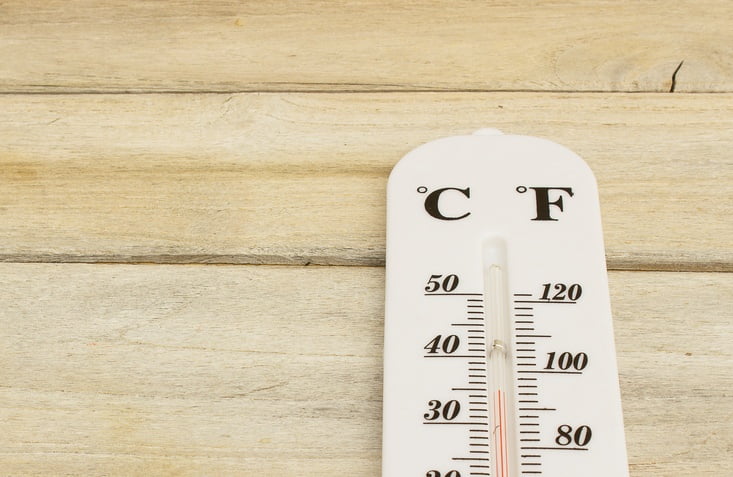How Much Do You Know About Electrical Enclosure Temperature Control

Almost every industrial or municipal facility, such as a telecom tower, water treatment plant, or food and beverage factory, runs on electrical distribution systems and process controllers housed in industrial control panels. In most cases, these enclosures trap waste heat given off by the electrical equipment inside, which causes their interior temperature to rise.
The equipment in an industrial enclosure, such as programmable logic controllers (PLCs), variable frequency drives (VFDs), motor starters and controllers, etc., each come with a maximum allowable operating temperature. If this temperature is exceeded, the component will begin to lose efficiency and may require extra maintenance or early replacement.
In order to prevent expensive repairs, unplanned downtime or even catastrophic equipment failure, you need to know the following facts about electrical enclosure temperature control.
Different types of NEMA enclosures
Electrical enclosures for industrial systems are usually designed for the type of environment in which they will be installed. The National Electrical Manufacturer’s Association (NEMA) has developed specifications for different types of enclosures based on location (indoors or outdoors), exposure to sun and weather, and the presence of particulates, directed water sprays, and corrosive chemicals.
These NEMA standards range from Type 1—an inside location with low particulate exposure and typical indoor temperatures—to Type 4 and 4X, which would be located outdoors and subject to forceful liquid sprays and possibly corrosive cleansers or saltwater.
A cooling system for an electrical enclosure should be specified with the same NEMA type as the enclosure itself.
Different cooling systems
Enclosure cooling systems come in two basic types: open loop and closed loop. Open loop systems are open to the ambient air, and use filtered fans to circulate air from outside the enclosure and through the interior of the enclosure, pulling heat out and away from the components inside. This is the most cost-effective type of enclosure cooling, but often is not a viable option, due to the presence of environmental contaminants, heavy dust or liquids, which may significantly affect the sensitive electrical components. Moreover, the temperature inside the enclosure will always be higher than the temperature outside the enclosure.
Very often, electrical enclosures will require a closed loop cooling system. Closed loop cooling can be provided by two types of systems: enclosure air conditioners and air to air heat exchangers.
Heat exchangers are the least expensive type of closed loop cooling, due to their passive heat pipe technology. This design uses a finned copper heat pipe containing liquid coolant, which absorbs heat from air inside the enclosure, causing the liquid to vaporize and rise to the top of the pipe. There, the excess heat is given off to the cooler outside ambient air, which allows the now cooled liquid to condense and flow back to the bottom of the pipe. The only energy input required is powering a pair of air circulation fans.
Because of its design, however, an air to air heat exchanger cannot cool an enclosure below the ambient temperature in which it sits, and it may not be able to handle a high heat load. In many cases, this means the enclosure will require an enclosure air conditioner, equipped with evaporator, condenser and compressor, to maintain temperatures within the manufacturer’s recommended operating range.
Different sizes, shapes and configurations
Designing a cooling system for an electrical control panel requires consideration for the size and placement of the system attached to the outside of the enclosure itself. In addition to conventional side-mounted systems, manufacturers can provide enclosure cooling systems that are more compact or fit a narrow profile, as well as systems that fit on top of an enclosure.
Enclosures for telecom towers and other applications located far from the electrical power grid may require a cooling system that operates on DC voltage, for use with battery, solar, wind, or other power sources.
Different accessory packages
Designing an enclosure cooling system requires specifications for any customization with option or accessory packages. For example, a cooling system for an enclosure located in an area that experiences both hot and cold weather may require an integrated internal heater to prevent condensation inside the enclosure or help the control equipment warm up before a cold start in winter. An enclosure located at a distance from the main plant or facility may require a remote control monitor and alarm.
Enclosures situated near the ocean, or in a caustic wet environment, such as a water treatment plant where harsh chemicals are present, may require additional protection corrosive chemicals. In those cases, the cooling system may be specified with a stainless steel housing and a corrosion package including protective coatings for refrigeration tubing, condenser and evaporator coils.
Different cooling system sizes
Sizing the cooling capacity of an enclosure cooling system is important for two reasons. An undersized system will not provide consistent cooling to maintain equipment within the manufacturer’s suggested operating temperature range. But an oversized system can also present problems. Not only does it cost more than necessary, but it can also cycle on and off too often, not allowing the humidity in the air to be condensed and removed and causing wide temperature swings.
Why you can’t ignore temperature control
Ignoring temperature control in an electrical enclosure risks losing efficiency, increasing unplanned downtime, and even causing a catastrophic event shutting down your plant. To properly design and specify a cooling system for an electrical enclosure requires taking into account all the above factors and more.
For help in designing an efficient, cost-effective enclosure cooling system, contact the experts at Thermal Edge.

